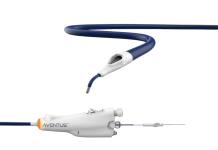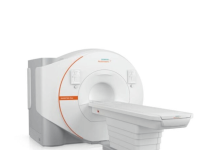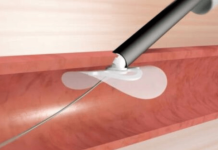AngioDynamics announced it received CE Mark approval for its AlphaVac F18 system, which treats pulmonary embolism and removes thrombi and emboli. AlphaVac F18 is an emergent first-line device the company designed for the non-surgical removal of thromboemboli from the pulmonary arteries and for the treatment of pulmonary embolisms. It has an ergonomic handle, an 18Fr cannula with an 85-degree angle, an obturator and a waste bag assembly.
Related: Axonics secures Australia’s TGA approval for F15 SNM system
“The CE Mark represents a major step forward in enhancing patient care and safety for endovascular therapies in the EU, a market with a higher prevalence of PE when compared to the United States,” AngioDynamics’ Senior Vice President and General Manager of Endovascular Therapies Laura Piccinini said in a news release. “This designation allows us to broaden our reach and provide innovative solutions to more healthcare professionals treating patients diagnosed with PE – on an increasingly global scale.”
AngioDynamics reports that an estimated 435,000 pulmonary embolism events occur each year in the six largest EU countries. The company said the CE Mark approval expands treatment options for healthcare professionals in the EU to help reduce thrombus burden and improve right ventricular function in patients with pulmonary embolism.
AlphaVac won FDA clearance in April.
AngioDynamics completed patient enrollment in its Acute Pulmonary Embolism Extraction Trial with the AlphaVac System (APEX-AV) study in December 2023. The study was a single-arm investigational device exemption study that enrolled 122 patients with confirmed acute, intermediate-risk PE in 25 hospital-based sites in the U.S. to assess the AlphaVac F18 system in treating PE.
According to AngioDynamics, the primary efficacy endpoint in the study was the reduction of the RV/LV ratio between baseline and 48 hours post-procedure. The primary safety endpoint was the rate of major adverse events (MAEs) within the first 48 hours. Patients were also followed for 30 days post-index procedure.
Study results showed there was a mean decrease in the RV/LV ratio for baseline to 48 hours post-procedure of 0.45 and a MAEs rate of 4.1%. There was also a 35.5% mean reduction in clot burden from baseline to 48 hours post-procedure.






